I Spent a Summer Friday Volunteering at Fabscrap, New York’s Largest Fashion Recycling Organization
Fabscrap
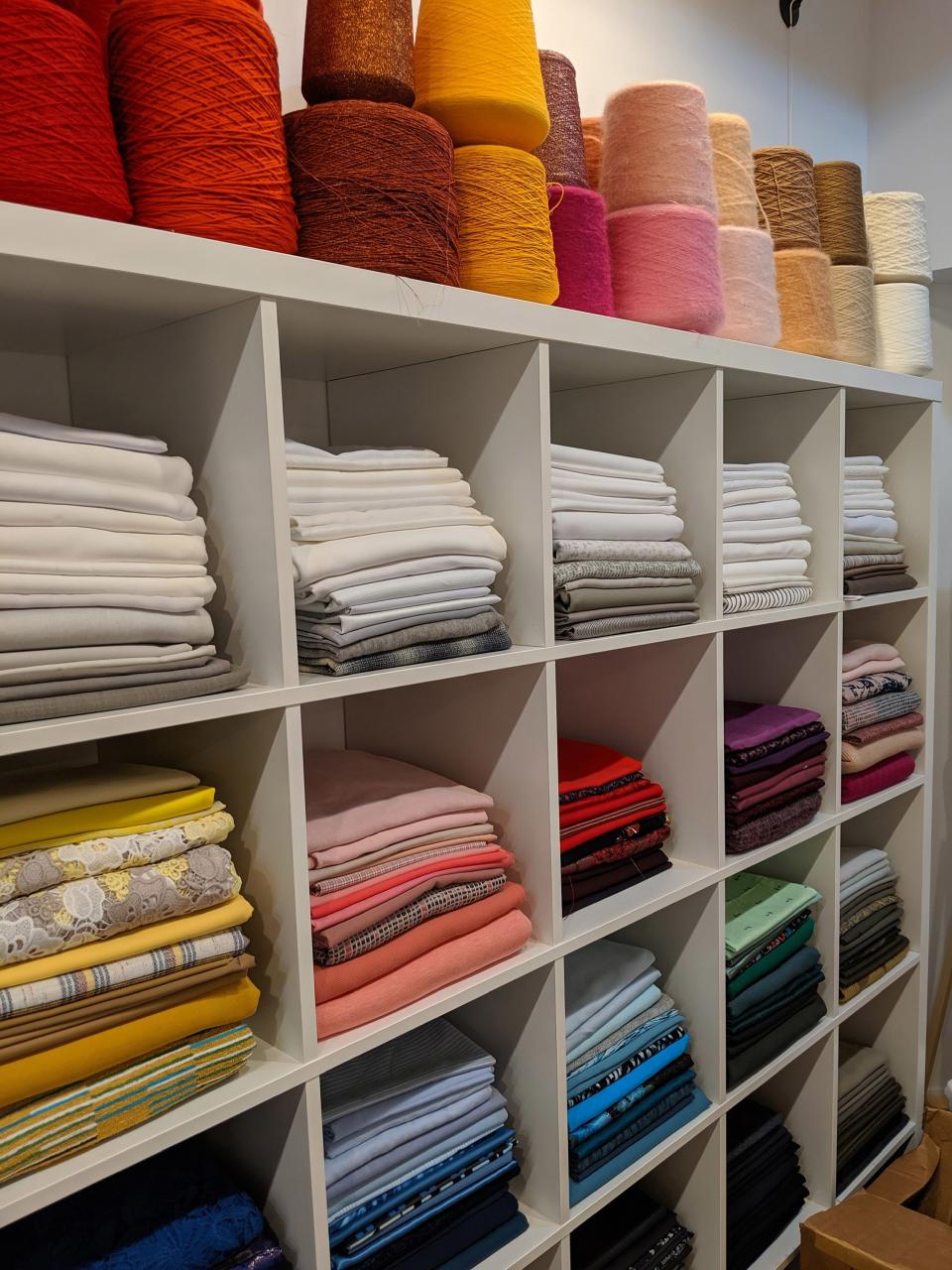
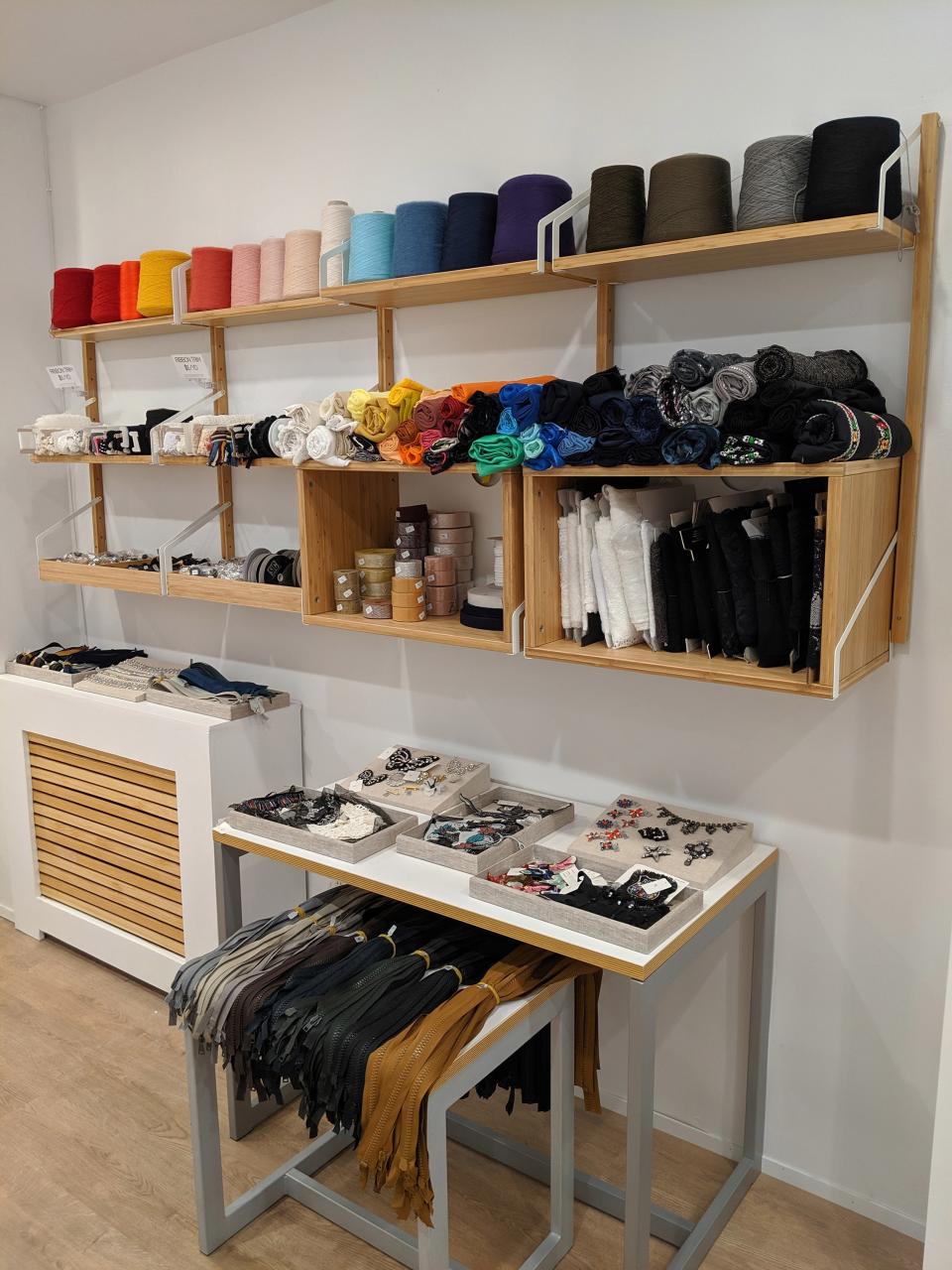
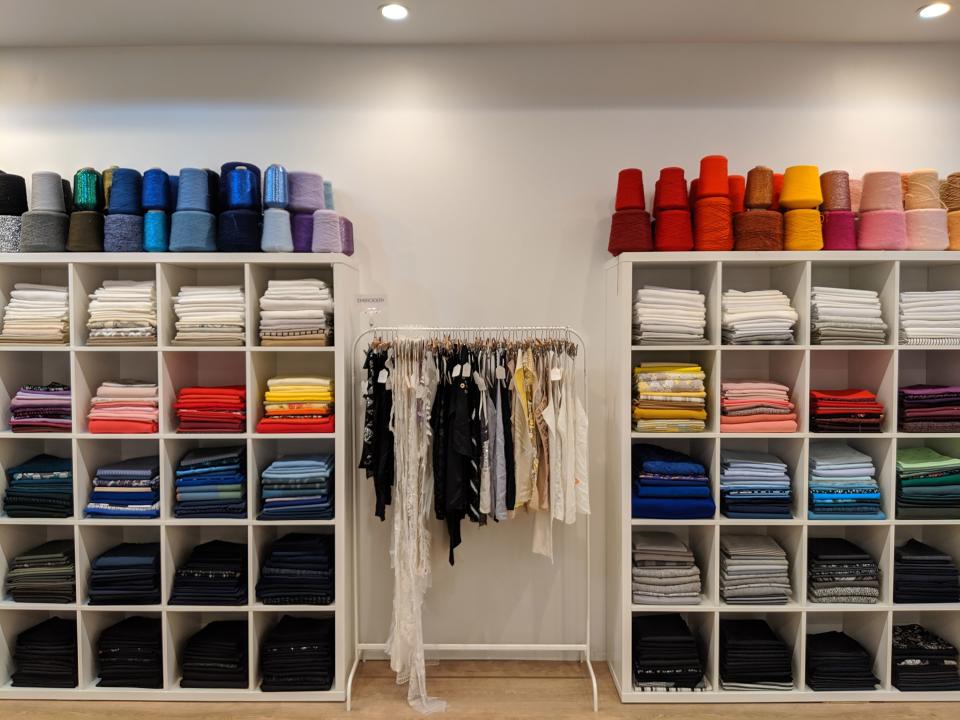
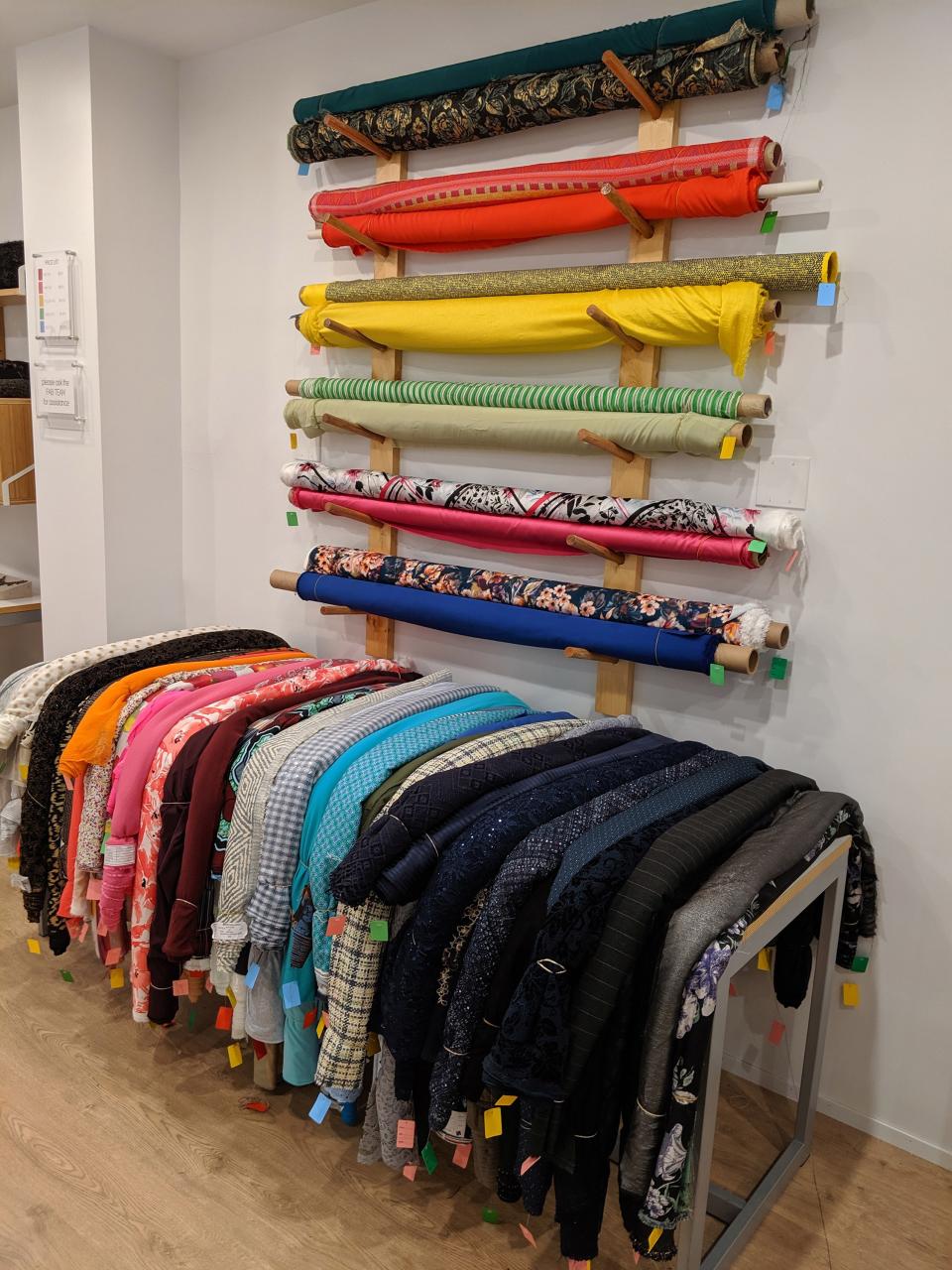
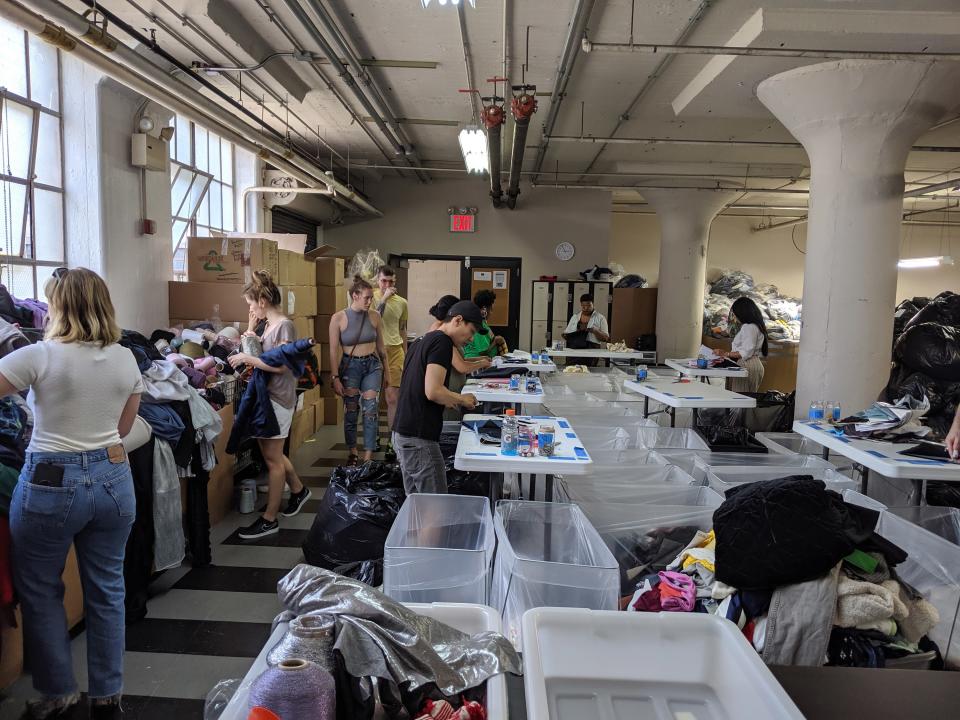
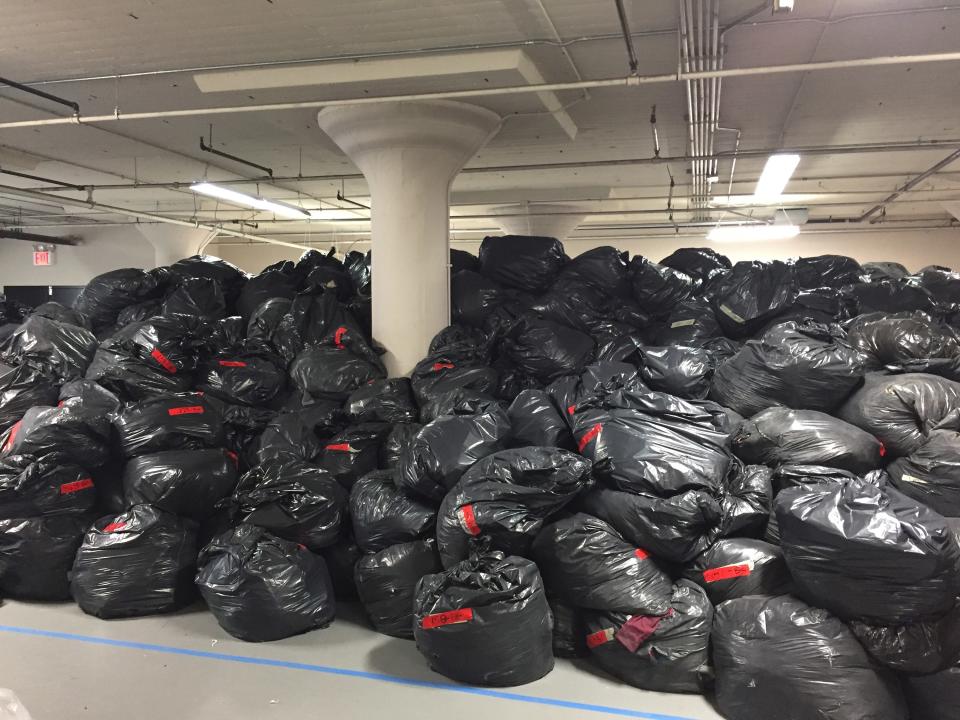
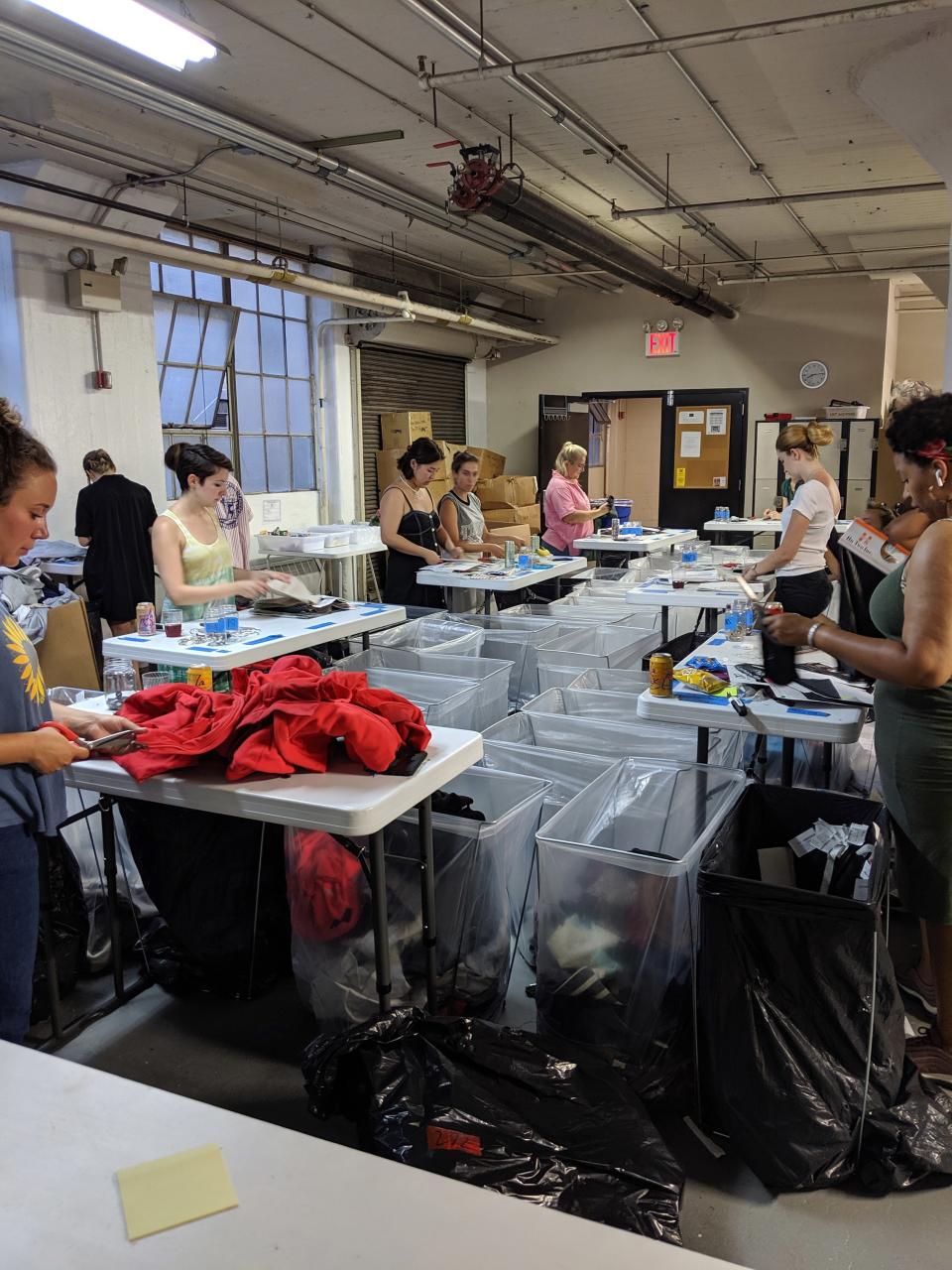
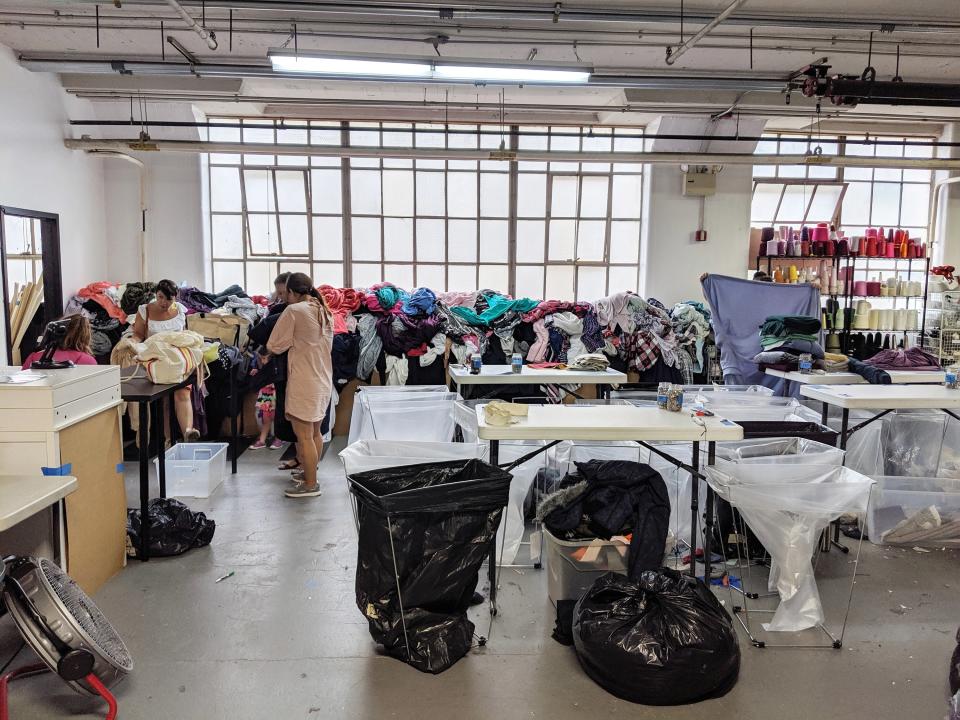
Life inside the Brooklyn Army Terminal is quiet. WWII-era train tracks sit dormant, covered in uncut grass and moss. A glass ceiling muffles noise from the outside. There are people working and chatting at lunchtime, but mostly time feels frozen inside the 500,000-square-foot manufacturing building on the edge of Sunset Park.
I walked in on a very hot summer Friday afternoon to volunteer at Fabscrap, a non-profit organization that sorts and resells textile waste from over 350 New York City clothing labels, designers, furniture companies, and costume studios. They resell the fabric and material in their warehouse as well as a newly-opened storefront and community space conveniently located next to the Fashion Institute of Technology. Fabscrap has worked with brands like Oscar de la Renta, Marc Jacobs, and Eileen Fisher. Recently, a group from Chanel’s corporate office came in to volunteer and learn more about what the company is doing.
“Do you know where Unit 5H-4 is?” I asked a man who was sitting solemnly in a chair underneath one of many concrete balconies that jut out at an angle from the multi-level, hollowed-out space. He didn’t say a word, just pointed down a seemingly endless covered walkway that runs down the middle of the old indoor rail yard. So I walked, taking in the intimidating Cass Gilbert–designed industrial architecture, but wondering where I was going. What did 5H-4 mean anyway? I got to the end, and thankfully, a security guard pointed to the right elevator. I met a young woman who was just as lost as I was—her name was Sue, she had a masters in sustainability, and had just left a job at the Environmental Protection Agency to move from Chicago to New York with her wife.
Sue and I rode the creaky elevator up to the Fabscrap headquarters and finally made it. Inside, several people stood at tables sifting through garbage bags filled with strips, scraps, and yards of fabric, some were pulling out old shirts, pants, and dresses too. A top-40 pop radio station played as a giant metal fan struggled to cool down the room. A woman who looked to be in her 40s was stationed at one table, while at another there were two boys in their early 20s, and a guy named Dakota, who was taking apart a garment with grommet detailing.
Behind everyone was a giant mountain of black trash bags, all of which held fabric and material that needed to be sorted. Nearby was Jessica Schreiber, who founded Fabscrap in 2016 with the intention of creating a viable and long-lasting fabric recycling program in a city that didn’t have one for commercial businesses. Before launching her non-profit, Schreiber ran the fashion recycling program for New York’s Department of Sanitation, which was only focused on residential buildings in the city.
Her colleague, Fascrap’s Community Coordinator Anne Keating, explained that they “get about 3,000 to 5,000 pounds of fabric per week from various companies around New York.” Fabscrap charges these companies a small, tax-deductible pickup fee and provides extra bags at every pickup. There are two types of bags: brown for general waste and black for proprietary fabrics, which the brand has denoted cannot be resold or reused. They will also give each company they work with an “Impact Report,” which includes the end use of all sorted materials, the total weight diverted from the landfill, and the overall environmental impact. They also share data in regards to the volume of the hidden commercial textile waste system.”
As Keating was explaining the sorting system, I glanced down at what would be my work table for the next couple of hours (volunteer sessions are each day from either 9 a.m. to 12 p.m. or 1 p.m. to 4 p.m., and volunteers can keep the first 5 pounds of fabric they sort for free should they choose to do so, and additional purchases are discounted). There were tape markers denoting types of fabric: spandex, polyester, wool, cotton, mixed. Beneath each was a bin for each category of fabric, and on the table, a container to hold hardware and embellishments that are removed from the discarded fabric or clothing items. Fabscrap sells as much material as it can, and the rest is shredded and recycled.
Once Keating was done showing us the process, I began to dig into by black trash bag and started to pull out what was mostly home textile samples, all of which were marked with the type of fabric and percentages. It was therapeutic cutting the fabric swatches from their paper holders and tossing them into their respective bins. The room felt like a community even after just a few minutes of cutting and stripping and tossing. Sam and Dakota began to chat, remembering that they’d met at a fashion sustainability event a few weeks ago. We all talked about ways the industry could change as a whole, how progressive Fabscrap was in the larger scope of fashion. On top of knowing we were making a very small difference, the volunteer work that day made me realize that this was also about connecting and coming together to help combat our global textile waste problem.
According to Fabscrap’s annual report from 2018, 60 percent of their material was reused, and 40 percent was recycled. They saved nearly 1,719 tons of CO2 emissions and planted an equivalent of 40,395 trees. In the United States, we send around 21 billion pounds of textile waste to landfills each year, which ultimately contributes to the release of greenhouse gases and global warming. While Fabscrap certainly helps make a dent in cleaning all of that up, there is still much more work to do, and it depends on volunteers to do it. It’s not only students at Parsons or FIT that can help, nor is it just curious designers or Ph.D.-carrying environmentalists.
Anyone and everyone can help, and that’s the real takeaway from a volunteer day at Fabscrap. I got through about half my bag by the time the two-hour session was over, but I felt a burning desire to sift through more forgotten materials. “We’re getting 15 to 20 companies signing up per week to begin service and volunteer with us,” Schreiber said with a smile. “There is definitely a consciousness that is awakening right now.”
Originally Appeared on Vogue

